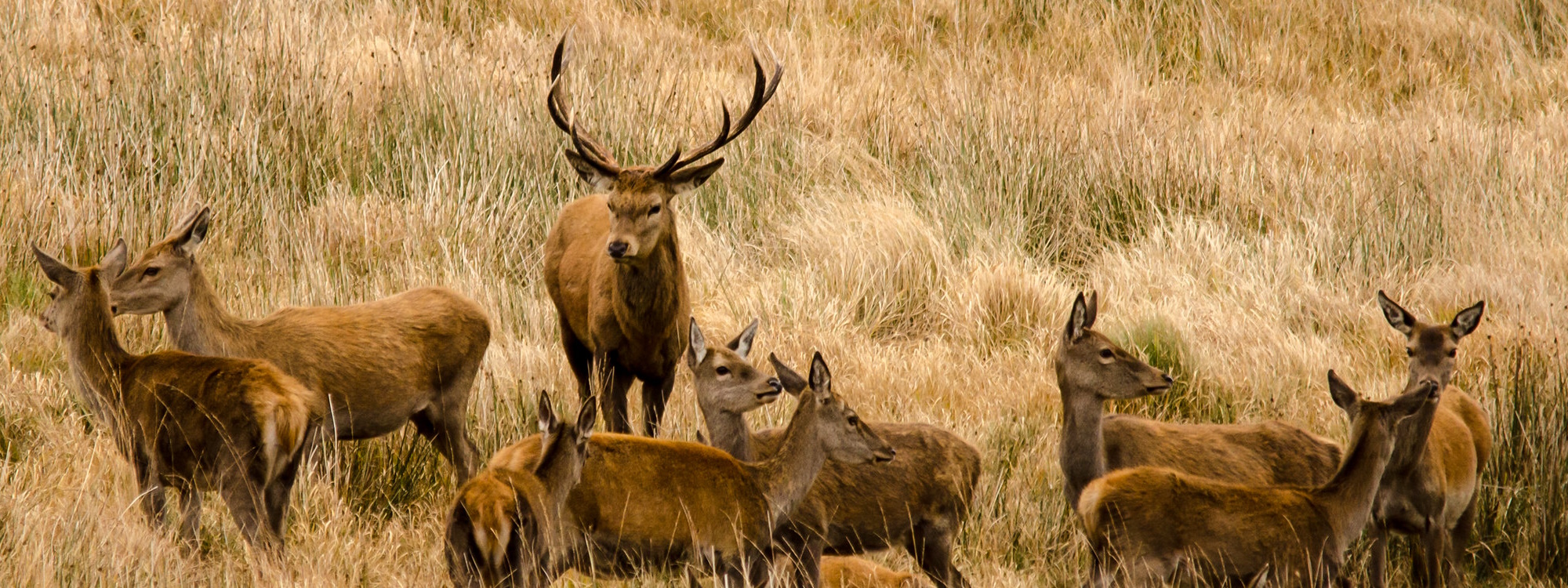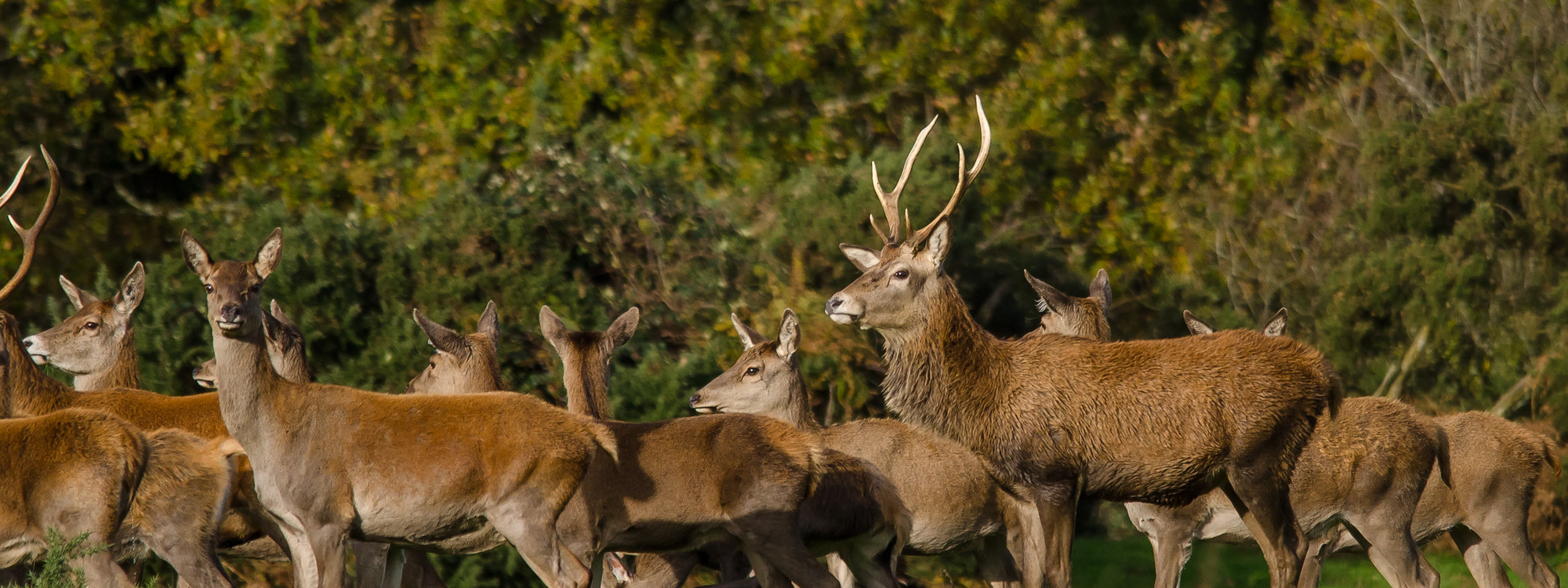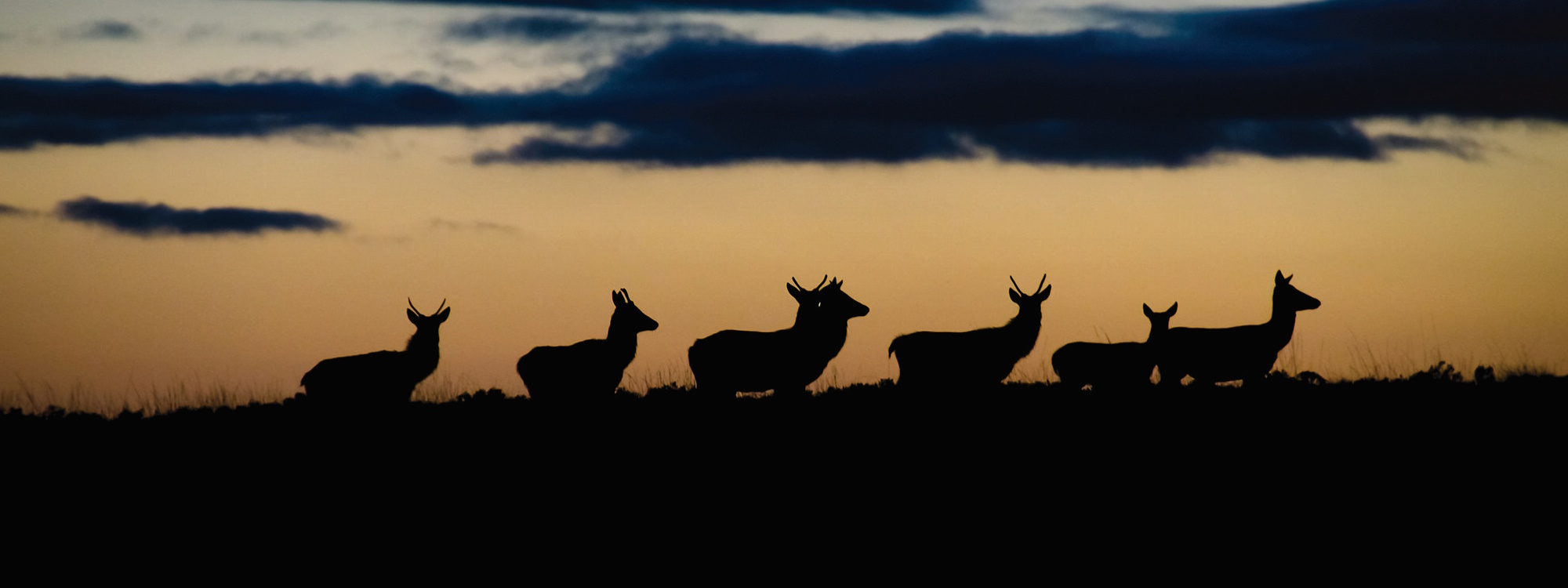Exmoor has the largest herd of wild red deer in England

Exmoor has the largest herd of wild red deer in England

An adult red deer stag can way up to 200kg

Red deer antlers are shed and grow back every year

Red deer have survived on Exmoor since pre-historic times. Exmoor was once a Royal Forest with strict Forest Law which protected the deer in order to maintain a supply of venison and a hunting ground for the king. There are about three thousand deer on Exmoor, living on moorland and farmland, and using the woodlands for cover. Red deer are the largest wild land animals in England. Adult stags stand about 115 cm at the shoulder. Hinds are about 15 cm less. Only stags grow antlers. They shed them in April and early May and new ones start to grow immediately. As the stag gets older the antlers have more 'points' until they reach old age and start to 'go back'.
Calves are born in June and July, and are usually born in moorland vegetation or by the edge of woodland. A single calf is normal and twins very rare. For a few days the calf will lie quietly, well-camouflaged with dappled spots on its russet coat looking like sunlight on dead bracken. If you do see a calf it is important not to touch it or the mother may abandon it. Soon it is strong enough to run with its mother and join the herd. They keep together for a year or more.
Red deer eat a wide variety of food, including young shoots of heather, whortleberry, brambles, saplings and grass. They also feed on acorns, fungi, berries and ivy as well as farm crops.
The National Park Authority, working with the Exmoor and District Deer Management Society and others, has recently completed a programme of research to find out more about the red deer population, its health, ecology, and the role it plays in the Exmoor economy.